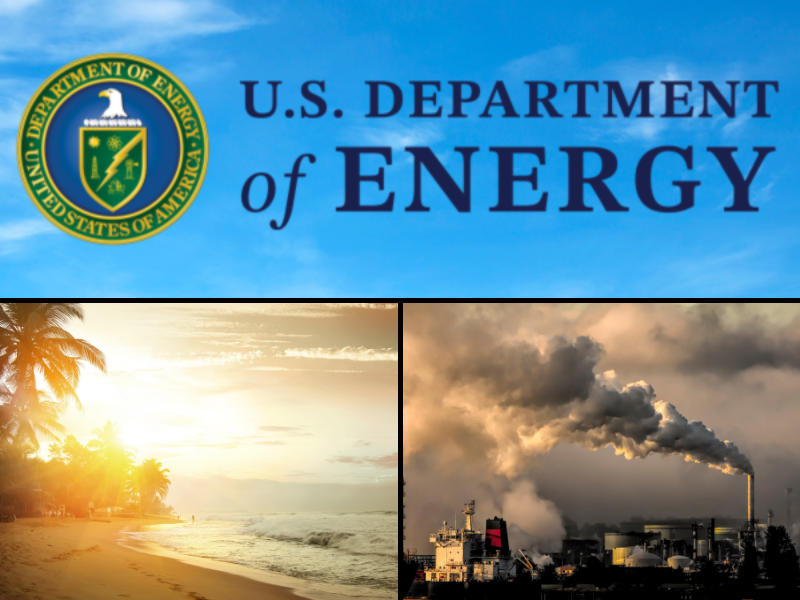Any effort to require that 100 percent of the electric power supply in any one state or for the United States as a whole come from renewable power energy sources would lead to extremely high costs and power shortages, says new research by Tim Benson, a policy analyst with The Heartland Institute, which publishes Environment & Climate News.
“Setting a national goal of relying upon 100 percent renewable energy within a decade would lead to catastrophe,” and would “require at least $5.7 trillion of investment in renewable energy and storage,” concluded a study by the Institute for Energy Research (IER) which Benson cites.
Renewable energy sources such as wind and solar are intermittent generators, dependent on weather conditions, with capacity factors of 34.6 percent and 25.7 percent, respectively. Due to the low capacity factors, renewables must be backed up by conventional energy sources like natural gas and coal, or alternatively, have large-scale battery backups, however, the latter technology is extremely expensive, and does not currently exist on the scale necessary to move to a 100 percent renewable electric power.
Lots of Land Needed
IER’s study found wind and solar facilities require vast amounts of land relative to conventional sources of power such as coal or natural gas.
“Wind power requires 70.64 acres per megawatt and solar power requires 43.50 acres per megawatt,” says the IER study citing research from Strata Policy. “In contrast, natural gas-fired power plants require 12.41 acres per megawatt.
“This means, solar power requires more than three and a half times more land per megawatt and wind requires more than five and a half times the amount of land per megawatt,” said IER’s study.
Benson notes, the construction of wind turbines and solar panels requires vast quantities of rare-earth metals, which are primarily mined and refined in China, meaning the greater the amount of renewable power demanded by a renewable power mandate the more the United States electric grid is at the mercy of an often hostile nation competing with the United States for economic supremacy and geopolitical influence.
Limited Mandates = Higher Costs
Even on a much more limited scale, residents and businesses in states that require electric power providers to provide set amounts of electricity from renewable sources, known as “renewable energy mandates,” or renewable portfolio standards, are experiencing energy rate increases 200 percent higher than the national average, according to the two studies.
For example, a U.S. Energy Information Administration report found North Dakota’s electricity prices increased 40 percent as the amount of electricity from solar and wind increased from nine to 27 percent. Similarly, South Dakota’s electricity prices increased 34 percent as the amount of electricity from solar and wind increased from five to 30 percent, and Kansas’ electricity prices rose 33 percent as electric power supplies solar and wind power plants increased from six to 36 percent.
“States with these [renewable power] mandates had electricity prices 26 percent higher than those without,” writes Benson. “The 29 states with renewable energy mandates (plus the District of Columbia) had average retail electricity prices of 11.93 cents per kilowatt hour (cents/kWh), according to the U.S. Energy Information Administration.
“On the other hand, the 21 states without renewable mandates had average retail electricity prices of only 9.38 cents/kWh,” Benson writes.
“In just 12 states, the total net cost of renewable mandates was $5.76 billion in 2016 and will rise to $8.8 billion in 2030, a 2016 study revealed,” said Benson referencing data from a 2016 report written by Timothy J. Considine, a professor of energy economics at the School of Energy Resources and the Department of Economics and Finance at the University of Wyoming.
Kenneth Artz ([email protected]) writes from Dallas, Texas.
INTERNET INFO
“The 100 Percent Renewable Energy Myth, Institute for Energy Research, February 8, 2019: https://heartland.org/publications-resources/publications/the-100-percent-renewable-energy-myth
Tim Benson, “Research & Commentary: U.S. Transition To 100 Percent Renewable Energy ‘Would Lead To Catastrophe,'” The Heartland Institute, April 24, 2019: https://heartland.org/publications-resources/publications/research–commentary-us-transition-to-100-percent-renewable-energy-would-lead-to-catastrophe





